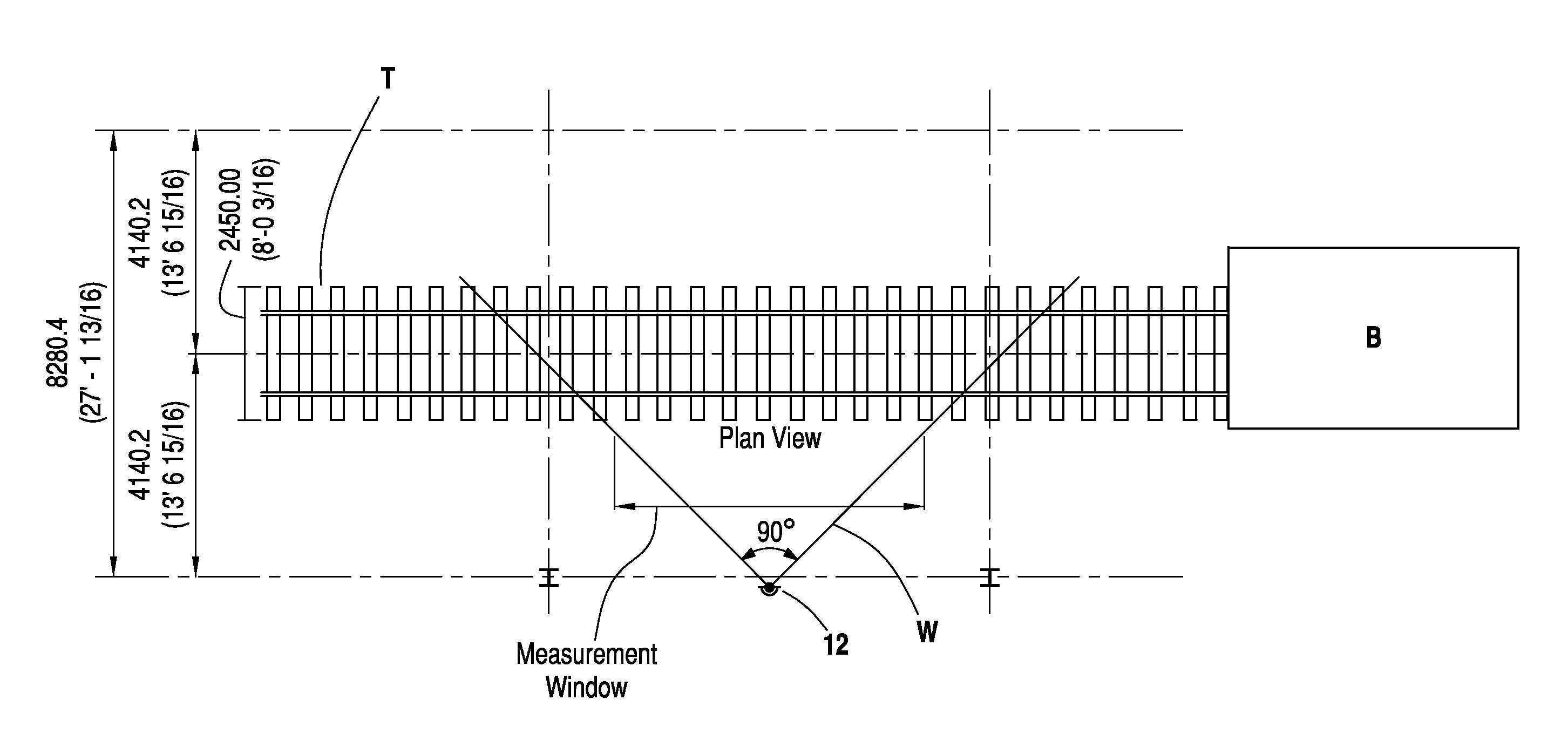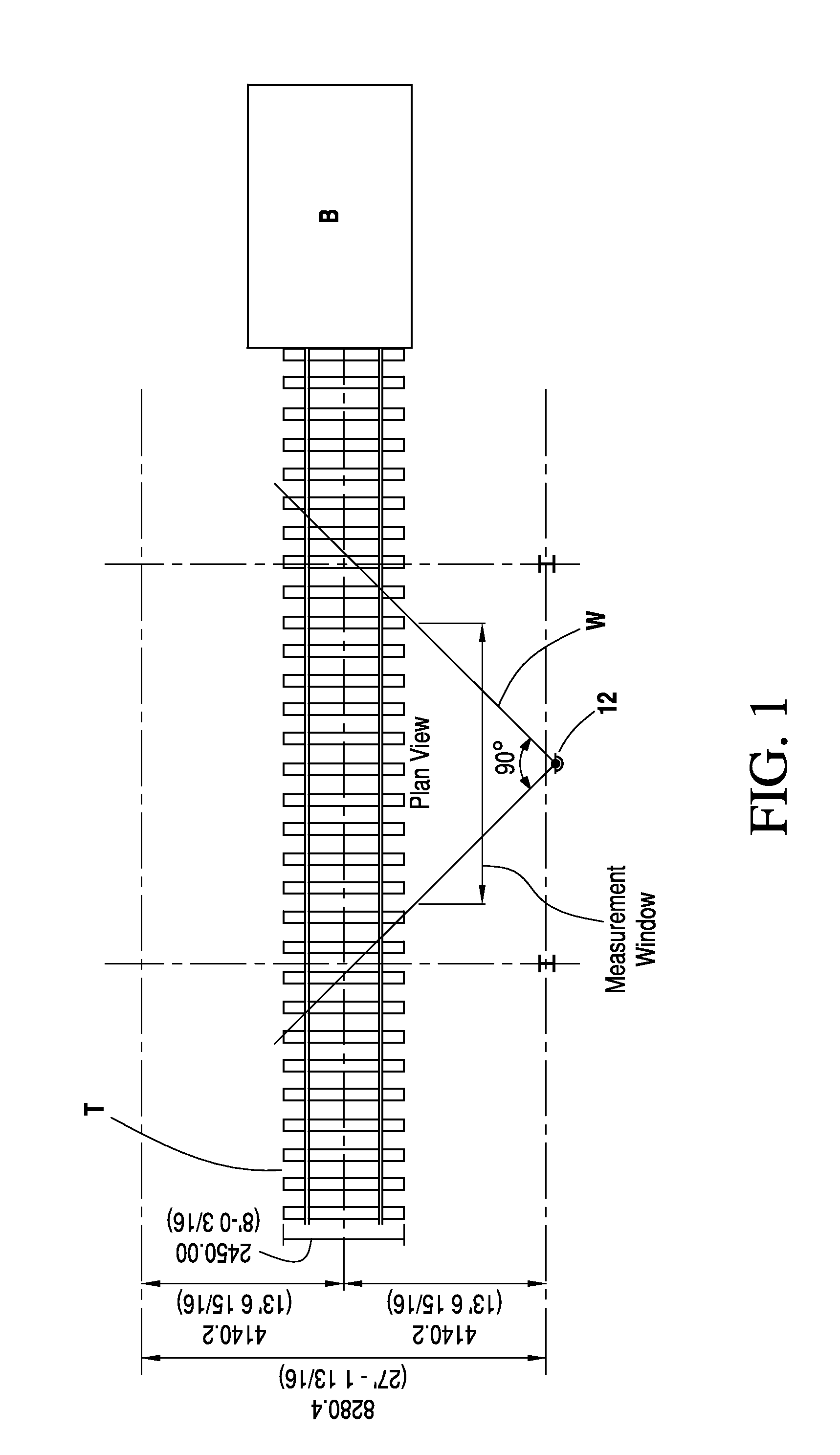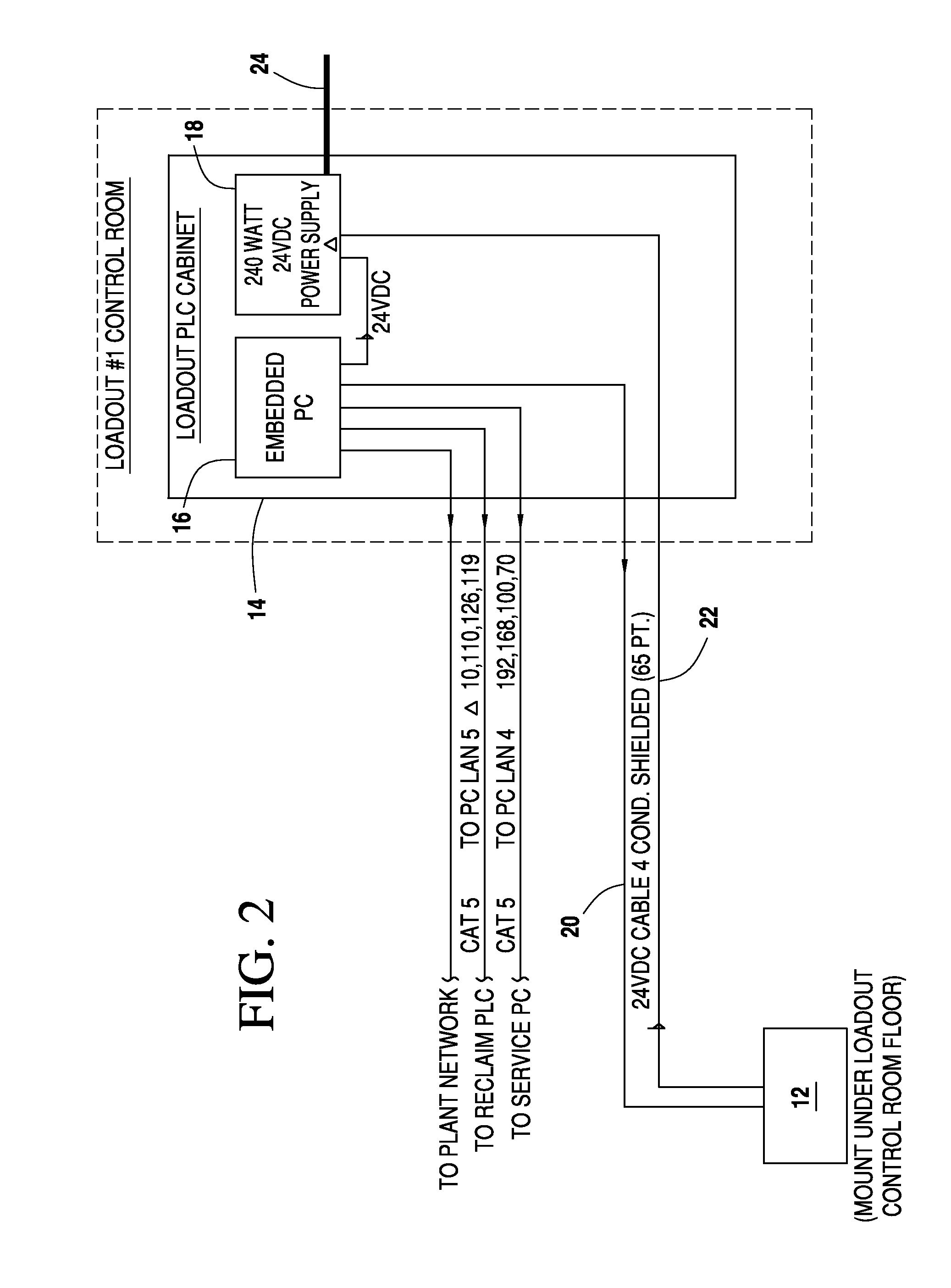System for Accurate Measurement of Vehicle Speeds for Low Speed Industrial Applications
a technology for industrial applications and accurate measurement, applied in the direction of instruments, devices using optical means, reradiation, etc., can solve the problems of assuming vehicle speed, waste and inefficiency, unnecessary labor, etc., and achieve the effect of precise speed determination at the point of measuremen
- Summary
- Abstract
- Description
- Claims
- Application Information
AI Technical Summary
Benefits of technology
Problems solved by technology
Method used
Image
Examples
Embodiment Construction
[0032]FIG. 1 depicts a plan view of the positioning of a scanning laser detector 12 of the invention relative to a railroad track T proximate to a bulk material processing station B. Preferably, the scanning laser detector 12 is fixed to be perpendicular to the track and between 10 to 20 feet (3-6 meters) from the track midline. More preferably to provide a measurement window W with a 90° arc, the scanning laser detector 12 is located 13.5 feet (˜4 meters) from the track mid-line.
[0033]FIG. 2 illustrates a combination of components, all of which are commercially available, utilized for a typical installation. The scanner laser sensor unit 12 is of the type such as that available from SICK AG Waldkirch (Germany) as a Model LMS511 relying on time-of-flight technology for non-contact measurement. The scanner laser sensor unit 12 includes a heater and other sensitive electrical components and is contained in a sealed housing suitable for outdoor environments. Preferably the laser / receiv...
PUM
 Login to View More
Login to View More Abstract
Description
Claims
Application Information
 Login to View More
Login to View More - R&D
- Intellectual Property
- Life Sciences
- Materials
- Tech Scout
- Unparalleled Data Quality
- Higher Quality Content
- 60% Fewer Hallucinations
Browse by: Latest US Patents, China's latest patents, Technical Efficacy Thesaurus, Application Domain, Technology Topic, Popular Technical Reports.
© 2025 PatSnap. All rights reserved.Legal|Privacy policy|Modern Slavery Act Transparency Statement|Sitemap|About US| Contact US: help@patsnap.com



